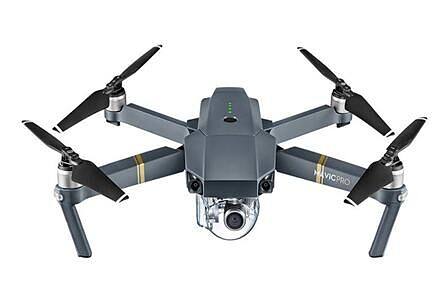Several difficulties in radar detection of UAVs
It is well known that radar systems have difficulty identifying small drones and drones flying close to the ground. So, what is the difficulty of drone detection?
1.Miniaturization and concealment: Many UAVs are small in size, so the radar scattering area is also small and the UAVs fly at low altitude, further reducing the possibility of being detected by radar. To detect a target, the radar must remain in line of sight with the drone. This is especially problematic in urban environments, where drones may appear within the sensor's line of sight for only a few seconds and then disappear again.

2. Maneuvering and hovering: the UAV can carry out fast maneuvering flight, and may change the flight direction and speed at any time, which brings difficulties to radar detection. Certain flight patterns -- most notably hovering and vertical movement -- may be harder to spot for detection systems that use automated tracking algorithms.
3.Complex background noise: When the radar detects the drone, it needs to distinguish the echo signal of the drone in the complex background noise. For example, drones may fly in complex environments such as cities, mountains, or oceans, all of which have numerous sources of radar interference, including communication antennas, two-way radios, telemetry systems, and even wires and LED lights.
4.Application of stealth technology: the UAV can use a variety of stealth technologies, such as the use of radar absorbing materials, stealth coatings, non-metallic materials and composite materials, to reduce the reflection of radar waves, so that the reflection area of the UAV on the radar is smaller and difficult to be detected. Special designs and constructions, such as sloping surfaces, can also be used so that radar waves scatter rather than reflect back to the radar, which can reduce the likelihood of radar detection. Optimize engine design and use thermal radiation coating to reduce the detection effect of infrared detection systems such as thermal imaging radar.

These stealth technologies can be used individually or in combination to minimize the risk of drone detection. However, it should be noted that these stealth technologies do not completely prevent drones from being detected, but reduce the possibility and effect of detection.
5. Multi-target tracking: In the modern battlefield environment, it is highly likely that multiple UAVs will appear at the same time, and the radar needs to be able to track and distinguish all targets, which puts high requirements on the performance of the radar system. To be effective, anti-UAS detection systems need to have very low false positives and false negatives. This is very difficult to achieve.
C-UAS detection elements must be sensitive enough to detect all UAVs in the area of use, but a system that is too sensitive can generate a large number of false alarms, rendering the system unusable. According to the results of the anti-drone system test, it takes "a lot of manpower" to distinguish the real target in the complex environment.
6.Cost and resource constraints: Although there are some advanced radar technologies that can improve the effectiveness of drone detection, these technologies are often expensive and require a lot of computing resources, which is not conducive to large-scale deployment. Relatively speaking, the cost and threshold of drones are lower, and they can be used in large numbers, which brings great challenges to radar technology.
In addition, radar systems need to be combined with other technologies, such as electro-optic, infrared, radio frequency, etc., to improve the accuracy and reliability of drone detection.

